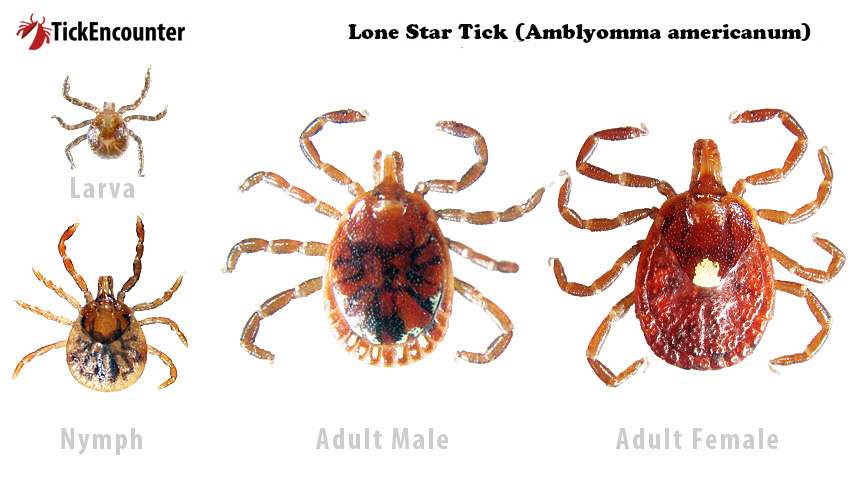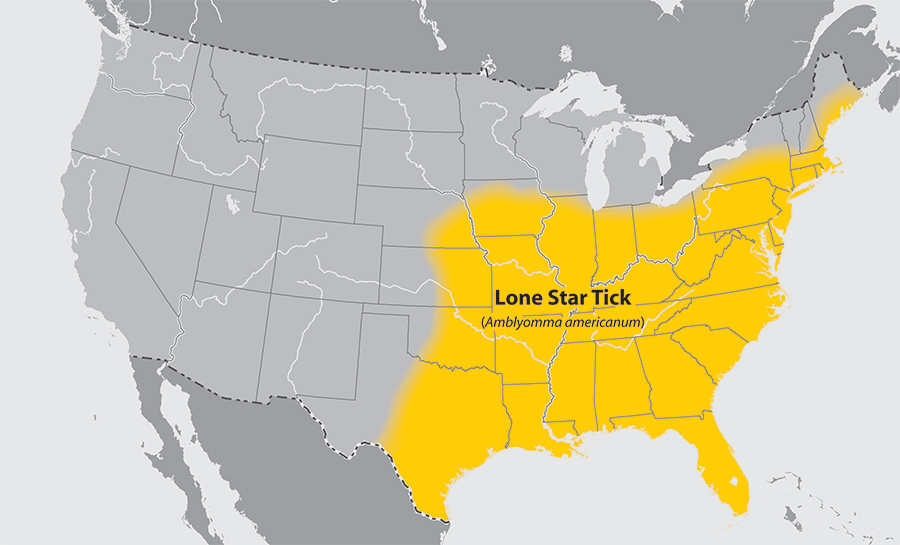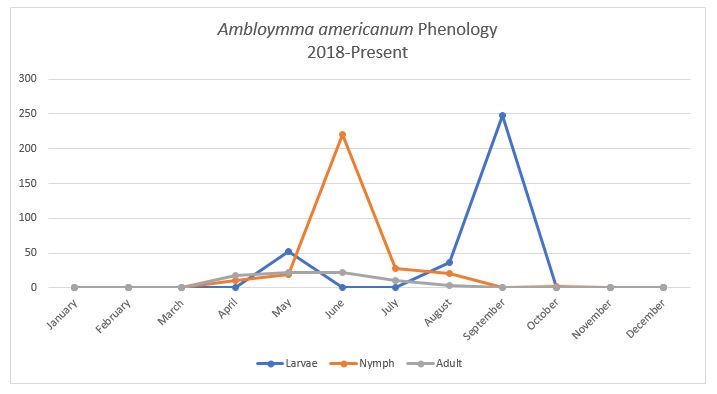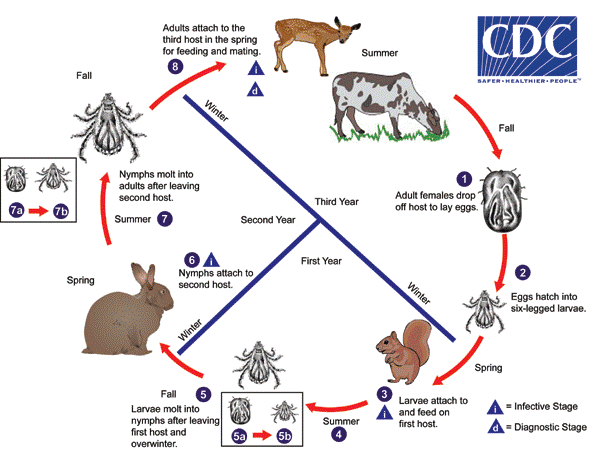Lone Star Tick
Amblyomma americanum
Why should you check for ticks?
Worldwide, ticks are known transmitters of pathogens to humans, pets, livestock, and wild animals. Removing a tick quickly can reduce the risk of contracting a tickborne disease. Lone Star ticks are aggressive biters and move very quickly often seeking out their host. This unique activity and morphology can aid in identification.
What do Lone Star ticks look like?
Lone Star ticks vary in size depending on the life stage. Adult females are the largest and distinguished by a white dot on their back. Adult males are slightly smaller than adult females. Nymphs are about the size of a poppy seed while the larvae are slightly larger than the head of a pin.

Image Source: TickEncounter
When and where are you most likely to see a Lone Star tick?
Lone star tick nymphs are active May through early August while adults are active April through the end of June. Adult and nymph stages of Lone Star ticks feed on large mammals such as deer and domestic mammals like cattle, horses, and dogs. Humans are commonly bitten by all life stages. Adults are found in woodlands with dense undergrowth, while nymphs are found in leaf litter with a preference to sandy soils.

Image Source: CDC
Peak activity periods of Lonestar tick life stages

Associated pathogens/allergies
Pathogens associated with the Lone Star tick are
Ehrlichia chaffeensis, Ehrlichia ewingii (human Ehrlichia)
Francisella tularensis (Tularemia), Heartland Virus, Bourbon virus, and Southern tick-associated rash illness (STARI).
Alpha-gal is a sugar molecule that is found in most mammals except humans and apes. It has also been found in the Lone Star tick. The alpha-gal allergy or the meat allergy is an allergic reaction to this molecule. Data from the United States and other countries suggest that alpha-gal allergy may be associated with tick bites. However, more research is needed to determine if tick bites can cause alpha-gal allergy.
Lone Star tick life cycle
The Lone Star tick is a three-host tick, such that each development stage feeds on a different host. Newly hatched six-legged larvae feed on small rodents for 3 to 7 days and then drop from the host. After 9 to 27 days, it molts and becomes an eight-legged nymph. The nymph feeds again for up to 38 days on another small mammal and once engorged drops to the ground. After 2 to 6 weeks it molts and becomes an eight-legged adult. As an adult, the Lone Star tick feeds for 6 to 24 days. The female lays its eggs 7 to 16 days after the last blood meal and can produce 3,000 to 8,000 eggs.

Image Source: CDC
Back to homepage